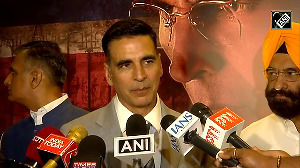Don't be satisfied by a 2% response rate. Ask for more. Rakhshin Patel, senior vice president and general manager, Thompsonconnect Worldwide, tells us how. . .
Monday evening. The phone rings. It's the agent of my mobile service provider, addressing me as Mr Patel and asking me if I want an add-on card for my non-existent wife. I tell her for the umpteenth time that I am not Mr and, No, I am not interested.
Tuesday morning. I receive an email from them. My needs haven't changed, so I delete the message without opening it.
Friday evening. Another call from the agent. Now, I'm getting a bit irritated to be contacted three times in one week. I tell them I am ready to move to another service provider and to take me off their telemarketing list. I would hate to change my telephone number, but the hassle factor has reached an unacceptable level.
Opt out, screen out, throw out
The result. Though I was satisfied with the quality of the product and the level of service, I became a disgruntled customer. I may not purchase from the company when a future need arises, and I may tell my family and friends about the bad experience. (Besides, writing about it.) Thanks, but no thanks.
If you are a typical mobile phone user, you receive three or more credit card solicitations a month. Five or more personal loan and home loan telephone calls a month. And usually, you don't respond. You just throw the mail into the trash or bang down the phone.
Credit card issuers and loan service providers mail and call millions of people every year. With responses of less than 1%, it means 99% of their marketing budget and precious time was wasted, contacting me and others like me.
Right customer, wrong message
The only thing that interests me (especially within the relatively short duration of a telephone contact) is my needs, my pain, my problems and how you can solve them. What you have is only meaningful within this context.
Why couldn't the loan provider, instead of selling rates and saying I am pre-approved, tell me why an equity loan might be good for me in today's stock market situation?
Direct marketers can no longer ignore the fact that the industry is in a crisis. Customers are voicing their anger for the flood of intrusive, untargeted and irrelevant marketing communications. The US Direct Marketing Association reports that its database of people opting out of email grew by 176%!
Similarly, the telephone suppression file grew by 65% last year. If that's not enough, according to a Harris Poll, 75% of people would make unsolicited email messages illegal. Though in India we don't have these privacy laws in place yet, consumers are soon going to be up in arms with these carpet bombing marketers.
Direct marketers keep clutching on to old paradigms like, '2% is an acceptable response.' It's not. It represents a horrendously low threshold of relevance. The opting out and junking of email, phone and mail indicates that the current saturation bombing will only further increase the number of customers who 'just say no' to our marketing. Remember, at the current 'acceptable response rate' of 2%, 98% of our audience throws our messages in the trash. Save your money.
Ready, fire, aim
So how can marketers target their prospects better?
You can't please everyone, so don't try. Instead, target your products or services to those customers most likely to buy what you offer. It's easier than you think.
First, define a target group of top prospects for your offering. Targeting synonyms used in advertising and marketing lingo such as SEC A, B will not help. Every prospect for your offering fits into one or more small groups or segments that can best be described by their attributes beyond income and education.
Useful attributes include geographic location, lifestyle indicators and purchasing behavior. Segment specific behaviors, profiles and objectives are critical in creating your target list.
Sometimes, an organisation can determine its target customers by looking at the other side of the coin - in other words, by asking who it should not try to please. The trick is to identify the best customers, and determine which characteristics differentiate these profitable customers from the rest. Then, focus your promotional strategies on the segments most likely to produce your new best customers.
A premium retail apparel brand in north India used a credit card base to acquire new customers by looking beyond the basic geo-demographic information. Data, mainly transactional information of the customer through his card purchases, was tracked according to apparel and lifestyle spends across competitive brands and categories in the past six months.
And the response? 22% to 30% across seasons. Who said 2% is average?
Ask and you shall receive
But what do you do when there are no lists available?
A lube manufacturer in Mumbai wanted to build a list of truck mechanics, the ones who influence lube purchase decisions. These roadside mechanics don't read the news; hence advertising was not the answer. Nor does this segment own credit cards, have club memberships or have an association of their own.
So the agency hired college students to walk the streets of nine cities in India, and take down the mechanics' names, contact details, the size of their workshop besides other personal attributes. Within three weeks, they had over 6,000 mechanics on their database.
Similarly, when a cigarette manufacturer in East India wanted to build a list of smokers of premium brands, research agents stood outside 3,000 paan-bidi shops filling in profiles of smokers who bought particular brands. And guess what: 375,000 smokers on their base within a month. What's your pleasure?
A car manufacturer wanted to develop a base of B car owners who had owned their car for sometime and would be ready to upgrade. The route? A 'hand-raiser' press advertisement with an interesting twist. It read, 'Wanted - A family to fly to Singapore!' . . . 'Eligibility: Owners of Zen, Esteem, etc.' Over two days, a substantial prospect base was developed that was more accurate and valid than any that could be purchased off the shelf.
A paint manufacturer wanted to talk to people who were ready to paint their homes. Unless you were psychic, you could never find such a list. So they developed a home décor service with a centralized call center for advice on painting homes and advertised the service. The advertisement headlined, 'Don't paint your home till you call 1-600-12345' got people ready to paint their homes calling in. No more 2% response and 98% wastage.
Most marketers forget that one of the easier routes to develop new customers is through their existing customers. A satisfied, happy customer is most likely to recommend others. Not only is it cheaper, but you would get similar profile prospects as your existing customers. Readers' Digest uses the referral route to garner millions of new customers.
Good, better, best
For most enterprises, there's a mix of good, better and best customers. Unfortunately, there are bad customers as well, and they can be a time and money drain. They are never satisfied and almost always cost you more to serve than they spend. Send them to your competitors.
Successful companies know exactly who their ideal customers are, and concentrate on satisfying those customers. They do everything they can to please and retain them. Simply stated, targeted customers should be those who will be loyal over time.
It's far more economical and profitable to retain and upsell existing customers than to attract new ones. A leading retailer reveals that, one year after becoming a customer, only two out of each thousand customers (0.2%) were in the top customer segment and only twelve (1.2%) were in the second segment. Worse still, over half were inactive.
Aya Ram, Gaya Ram
Many customers are cherry pickers, the kind who, for example, would change mobile services several times, lured by cheaper rates and bigger incentives. When the introductory offer runs out, so do they, long before they can ever be profitable.
A telecom operator in South India, struggling with high churn, planned to develop a blanket rewards and relationship program with its mobile subscribers.
Rewarding all subscribers was not the answer. The bottom 28% of their subscribers were actually eating up half the profits generated by the others. Another 12% did not generate any profits. 30% were only slightly profitable. By focusing on the top 30% of its customers, the operator saved 70% of his marketing budget, and was able to retain 98% of these high end customers in a market that was witnessing over 50% churn.
It can be more profitable to lose bad customers than to gain new ones! They cost more money to service than they generate. Designing a loyalty program that rewards better customers without rewarding this segment at all gives them less reason to stay. Retaining the right customer is common sense. Unfortunately, not common practice. Loyal customers are your advocates. The chosen few who will attract the many new.
2% is not enough
It's the time to not accept status quo. Pursue innovative strategies and not textbook solutions. Invest in building niche databases. Don't spam, not even once, not on your life - you will do your company, the industry and above all, the customer a favor.
Reset your sights, target right and surprise me, and you may even get a 98% response.
Rakhshin Patel is senior VP and general manager, ThompsonConnect.
Published with the kind permission of The Smart Manager, India's first world class management magazine, available bi-monthly.







 © 2025
© 2025